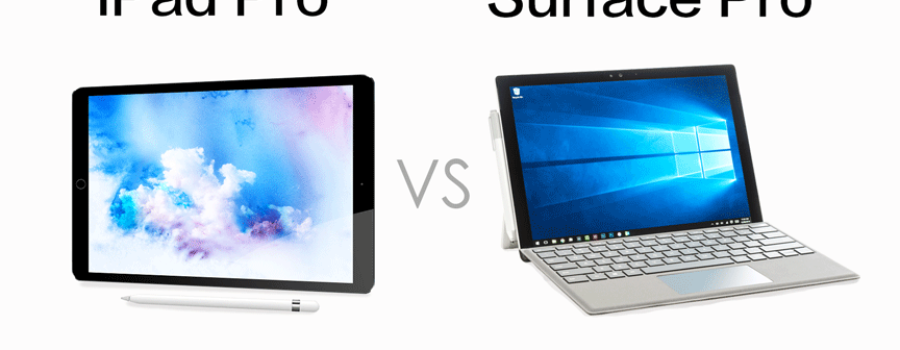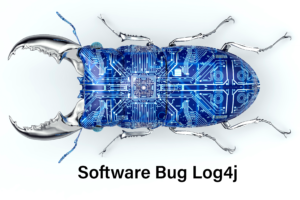It’s a battle as old as time itself… or at least dating back to 2015 when Apple launched the iPad Pro seemingly to take on Microsoft’s Surface Pro and prove an iPad can be both a tablet and a laptop.
1. OS: The beginning (and possibly the end) of the discussion
For many, the iPad Pro’s mobile operating system makes it a complete non-starter compared to the Surface Pro running on full Windows 10 Pro. Having Windows 10 means you can run full versions of traditional Win32 software as well as Flash and Java apps and much more that Apple’s iOS simply can’t. With iOS you’re limited to what’s available in Apple’s App Store. While that app catalog is in the millions, you might not find mobile equivalents for the full desktop software or legacy applications you need. (Ironically, you can’t even develop iPad apps on an iPad.)
That said, there are benefits to being locked into the App Store, not the least of which is security. Apple approves all apps before they’re available in the store, so getting malware is unlikely. It’s something that Windows is attempting to replicate with its new Window 10 S operating system on the Surface Laptop.
2. The changing multitasking landscape
Apps aside, iOS can’t handle workflow the same way Windows 10 can on the Surface Pro. Being able to have two, three, four or more apps open on one screen and quickly switch between them, but also move text, images or data between them is something you take for granted with a desktop OS. But with iOS, this sort of multitasking is limited.
However, with the launch of iOS 11 this fall, the iPad Pro will get greater multitasking support and a new Files app for accessing local and cloud-stored files. It’s still unclear exactly how much access you’ll have, but we’ll post an update as soon as we test it ourselves. The enhanced multitasking includes the ability to drag and drop text, images and files between apps; a new customizable Dock for quickly opening frequently used apps and documents from any screen; and improved app switching and split-screen viewing.
3. Accessories that matter: Keyboards, styli and pens
For the Surface Pro, Microsoft’s basic Type Cover is $129 or there are the fancier color versions covered with Alcantara fabric for $169. Apple’s Smart Keyboard is $159. Both give you a good typing experience, but the Surface Pro tablet’s built-in hinge makes for better positioning and, more importantly, the Type Cover has a trackpad.
As for writing and drawing on their screens, the performance is nearly indistinguishable between the two new tablets: Both are excellent and greatly improved from prior models. The iPad Pro’s 20-milisecond latency is attributable to the new display’s 120Hz refresh rate. For the Surface Pro, it’s the updated Surface Pen that takes the credit with support for 4,096 levels of pressure sensitivity and 21ms of latency.
4. Plenty of ports vs. many, many dongles
The Surface Pro comes prepared to connect to peripherals. There’s a Mini DisplayPort for an external monitor, a full-size USB 3.0 port for, well, anything that plugs into one of those, and Microsoft’s Surface Connector that powers the tablet can also connect to the Surface Dock, which has two Mini DisplayPorts, Gigabit Ethernet, four USB 3.0 ports and an audio out. There’s also a microSD card slot.
With just one Lightning port on the iPad Pro you’ll need to buy adapters to connect to an external display, Gigabit Ethernet, an SD card reader or add a USB 3.0 port. The iPad Pro’s magnetic Smart Connector is currently used only for the Smart Keyboard cover.
5. Speed vs. battery life
The Surface Pro comes in multiple configurations that start at $799 and go up to $2,699 for one with an Intel Core i7 processor, Iris Plus Graphics 640, 16GB of memory and a 1TB SSD (we reviewed a $2,199 Core i7 version with 512GB of storage). With the iPad Pro you can pick between different amounts of storage and two screen sizes. The smaller 10.5-inch model starts at $649, while the 12.9-inch, which is more comparable in size to the Surface Pro, starts at $799. (None of these prices include a keyboard or stylus, either.)
The Surface Pro might seem like a no-brainer here for performance, but the fact is the iPad Pro’s new A10X Fusion chip is designed for intensive tasks — from huge spreadsheets and presentations to 3D modeling and 4K video editing. And remember, the hardware is optimized for App Store apps. Regardless of the new iPad Pro you buy, you’re going to get the same performance, which can’t be said for the Surface Pro. You can check out benchmark results at the end of this story to see how a new iPad Pro matches up against a Surface Pro with a Core i7 processor and 16GB of memory.
Read full review: iPad Pro vs. Surface Pro








